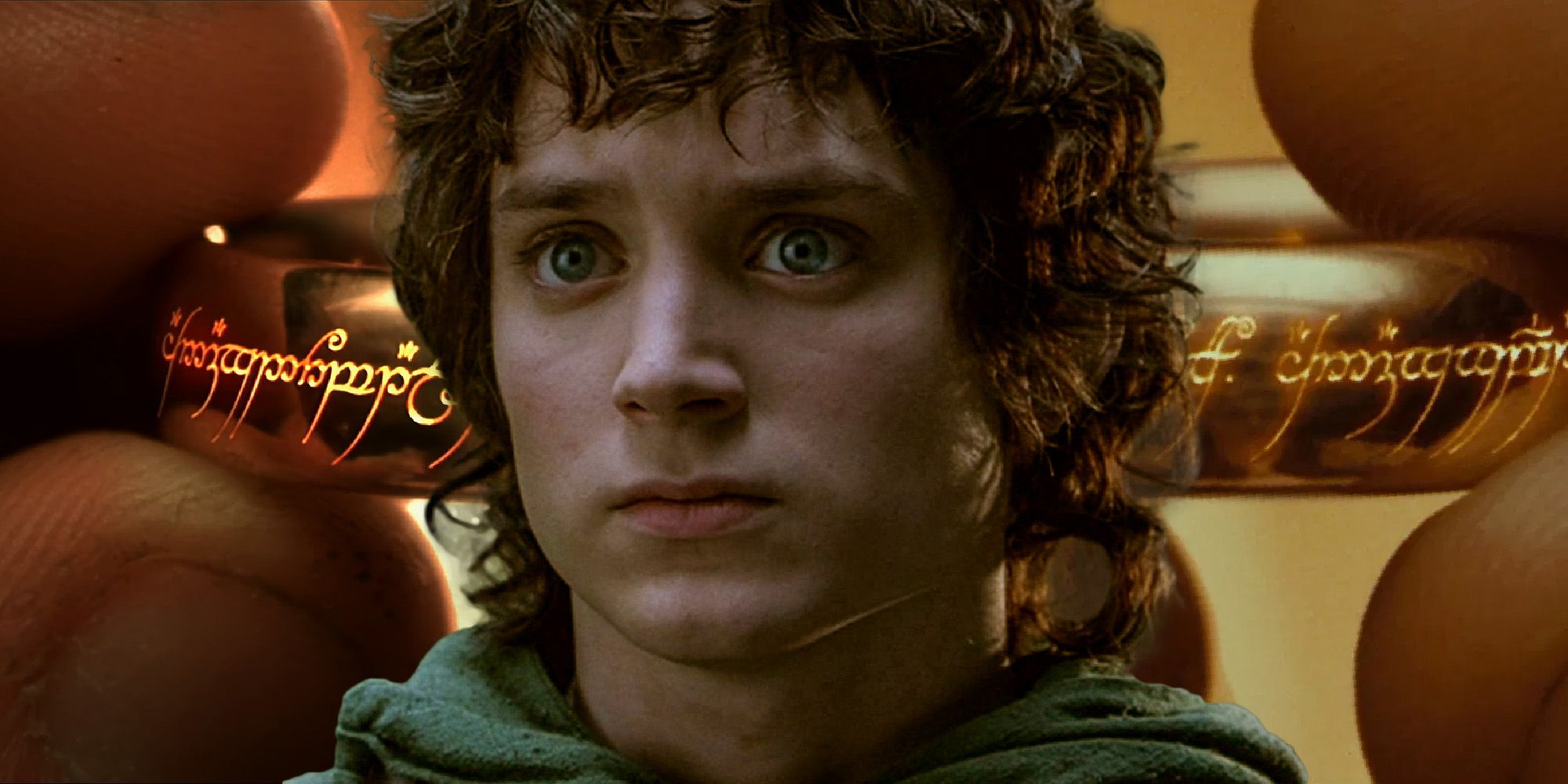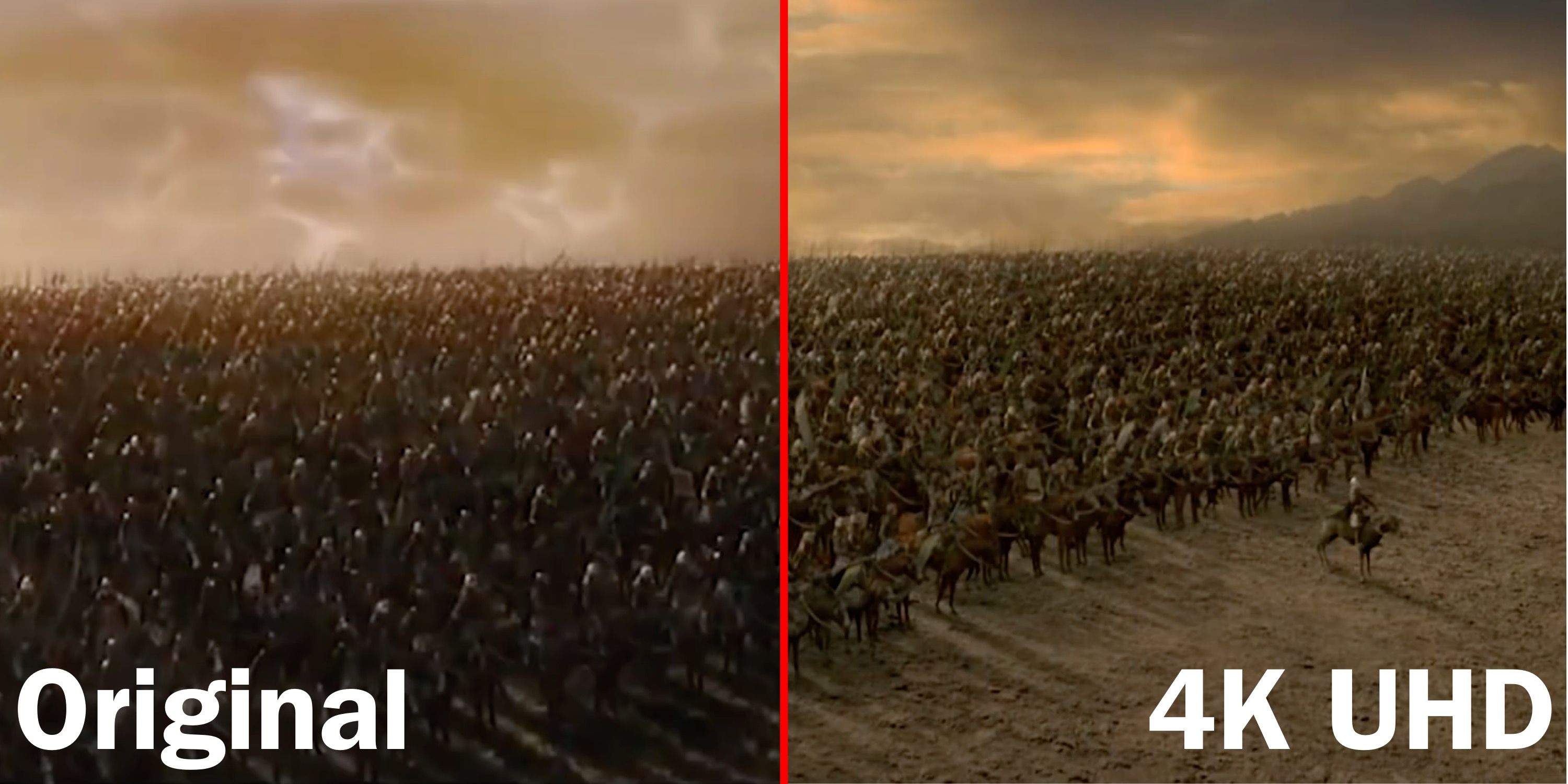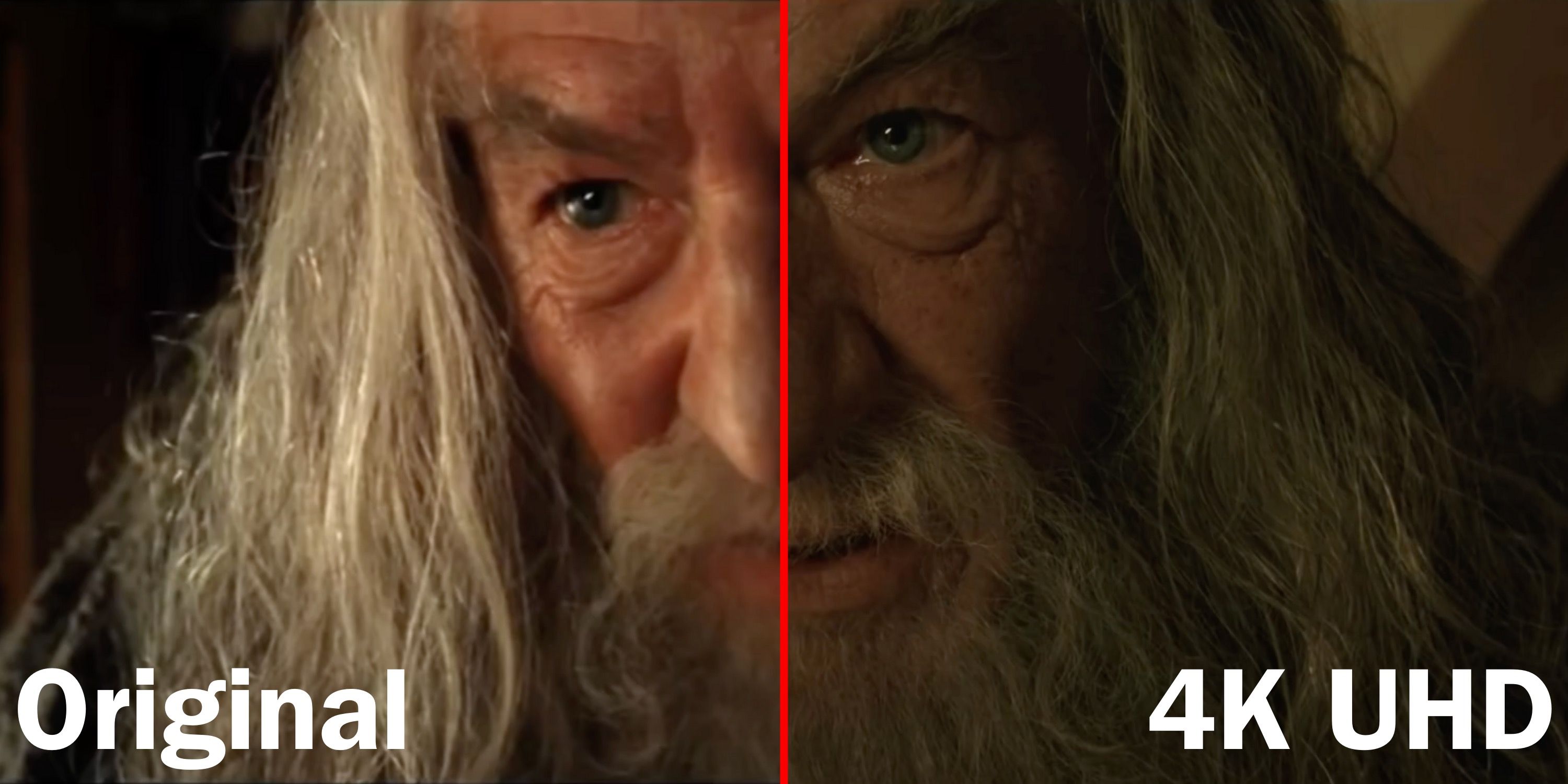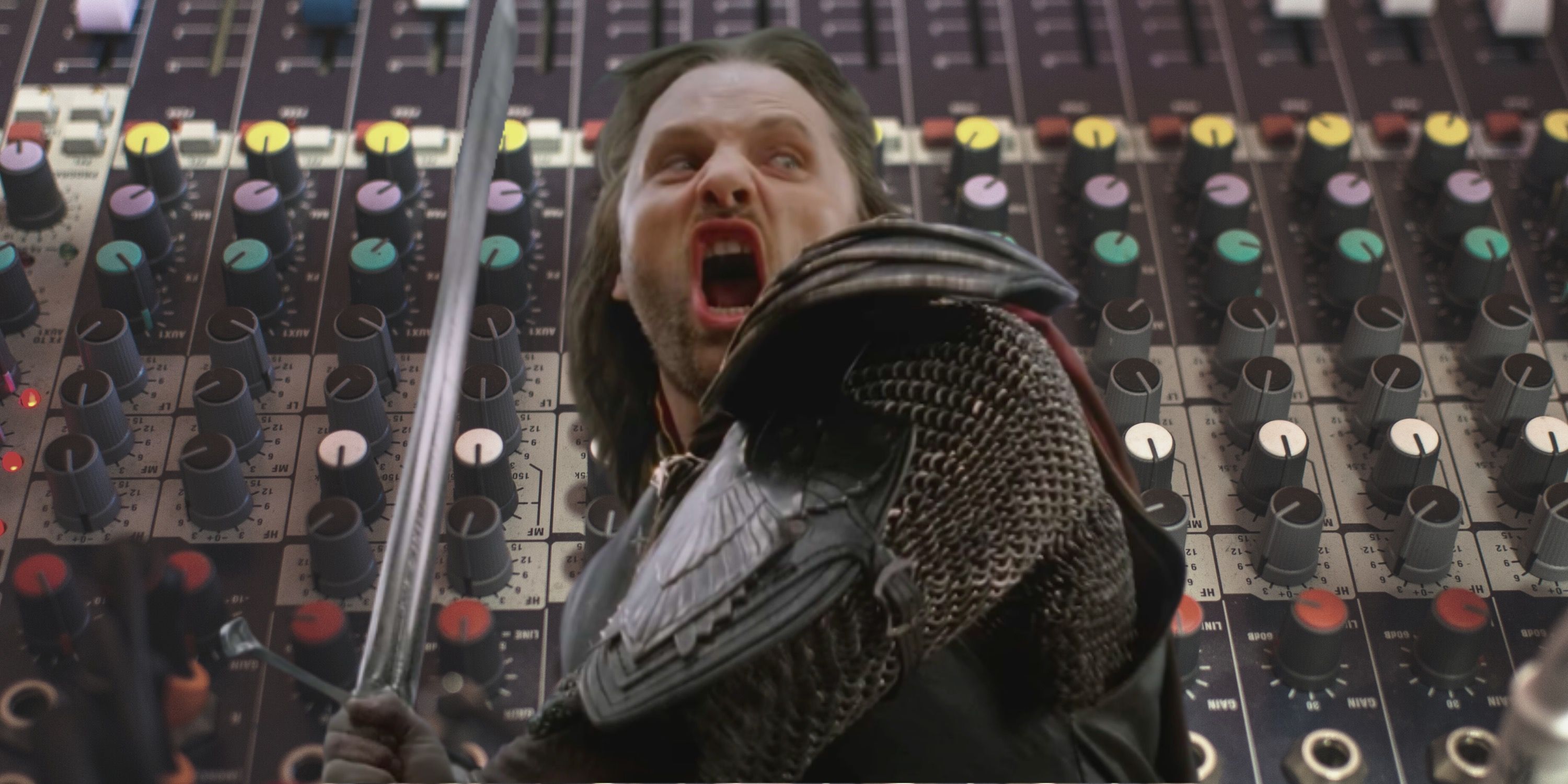
Peter Jackson and company exceeded all expectations with The Lord of the Rings, which nearly 20 years later, was subject to a 4K Ultra High-Definition restoration supervised by Jackson himself. Featuring a meticulous visual overhaul and even more painstaking audio reworking, the latest edition of the fantasy adaptation is no doubt impressive — but why was the restoration made, and what specifically did it entail? Does it succeed on all levels, or does it connote unnecessary director tinkering like George Lucas's infamous Star Wars revisions?
Bringing J. R. R. Tolkien's fabled novels to the big screen proved to be a massive undertaking, but Warner Bros and New Zealand filmmaker Peter Jackson saw their risk pay off: The first installment provided a nation reeling from the brutal reality of 9/11 a much-needed outlet for escapism, building an immersive world that measures up to Tolkein's evocative writing and earning nearly 10 times its budget at the box office. In short order, the second and third films in the trilogy were released to similar critical acclaim, each canonized in the annals of fantasy and blockbuster filmmaking while earning high placement in the celebrated IMDB Top 250 list. In short: The Lord of the Rings was a massive success.
Naturally, this success led to various home media releases, including lengthy extended editions. But when the trilogy was brought to Blu-Ray format in 2010, the reception was mixed. Updating the movies to the next level of high definition had unintended consequences that negatively impacted the iconic trilogy's visual aesthetic. Shortly thereafter, Jackson and company returned to Middle Earth armed with new filmmaking tools in their arsenal to create The Hobbit movie trilogy, which failed to meet the high expectations of its predecessor. In 2020, Jackson and his team to return to their original opus and give it a definitive polish that would make the late great Rings cinematographer Andrew Lesnie proud.

Lesnie's work on the original trilogy was a major component in its success. His is the eye through which audiences saw Middle Earth: Lesnie turned the sweeping landscapes of New Zealand into the varied, and evocative, terrain of the Fellowship's odyssey — even his dark, cavernous underground sequences make careful use of light and shadow. The result of his and Jackson's attention to detail is a franchise brimming with iconic images, from vast wide shots to intimate close-ups, working in tandem with brilliant performances and a wonderful score to capture the fantastical world.
The original Blu-Ray experience hardly did Lesnie's vision justice. Though the extended editions offered oodles of additional LOTR content, the remastering process used for the movies resulted in an infamous greenish-blue tint thrown over practically the entire runtime. This change in color timing proved jarring for many fans who were distracted by oddly-colored skies, spider veins on actors, and off-color darks and lights which were truer blacks and whites in their initial theatrical release. Yet, nearly two decades after their premier, the Lord of the Rings movies needed an update: the sharpness of image quality, or lack thereof, began to show the series' age, especially when compared against the more recent Hobbit films and the other fantasy films inspired by the original trilogy.

Armed with modern tools that provided meticulous control over every visual component, Peter Jackson began the restoration process. In remastering the footage, Jackson and his team returned to the original 35mm film negatives and scanned them with greater fidelity afforded to them by today's technology, creating a higher-resolution intermediate with which to work. From there, they used digital color grading to create the most desirable image possible, carefully balancing contrast and expanding dynamic range. The result? The pitch blacks of Moria are deeper. The white snow and shimmering lights are more brilliant than ever before. The iconic images regain intricate specular details, and Lesnie's warm cinematography is freed of its unfortunate blueish-green tint, rendered now in its purest intent.
Perhaps the most drastic area of improvement is the minute details. Close-ups of Gandalf or Frodo reveal individual hairs, the treads of fingerprints, worn hands, and tired faces, each of which highlight the pitch-perfect actor performances. The detail of flames lighting the dark caverns of Moria as Gandalf fights Durin's Bane demonstrate detail regained in wider shots as well as the improved dynamic range. In some of these wides, however, the beloved film grain is less present, smoothed out to mesh better with certain VFX elements and close-ups. While this intrinsic property of 35mm film lends a realism to the image, on the whole, the sharpness of the remaster elevates each facet of the production by improving its fidelity: from the acting, to the set design, to the cinematography.

With all the visual improvements in this definitive edition, it may come as a surprise to discover the audio reworking outclasses its visual counterpart. In the new 8 channel Dolby Atmos soundtrack, Howard Shore's rich orchestral score demonstrates incredible fidelity on its own, retaining distinct instrumental highlights while providing a full-bodied base to the sound effects and dialogue. And just as each instrument in Shore's orchestra can be heard, so too are each voice and line clearly recognizable in spite of an at-times bustling and intense soundscape. In sequences that revel in the films' cavernous spaces, the audio cues are placed deftly to further envelop the audience in the immersive setting. The Atmos remaster vastly improves on its Blu-Ray DTS-HD predecessor, creating the ultimate home theater experience for fans with a speaker setup apt to the level of detail executed in this most recent edition.
The 4K remaster will likely not please all, but not for lack of trying. The work Jackson and company put into this restoration clearly shows, and there's every chance it will bring new viewers into the fold while helping existing fans recapture the feeling of experiencing Middle Earth for the very first time. While an Amazon LOTR series beckons on the horizon, this revitalization of The Lord of the Rings films provides plenty of spectacular fantasy brilliance to chew on until a new adventure arrives.
from ScreenRant - Feed https://ift.tt/3tyT5kh


0 Comments